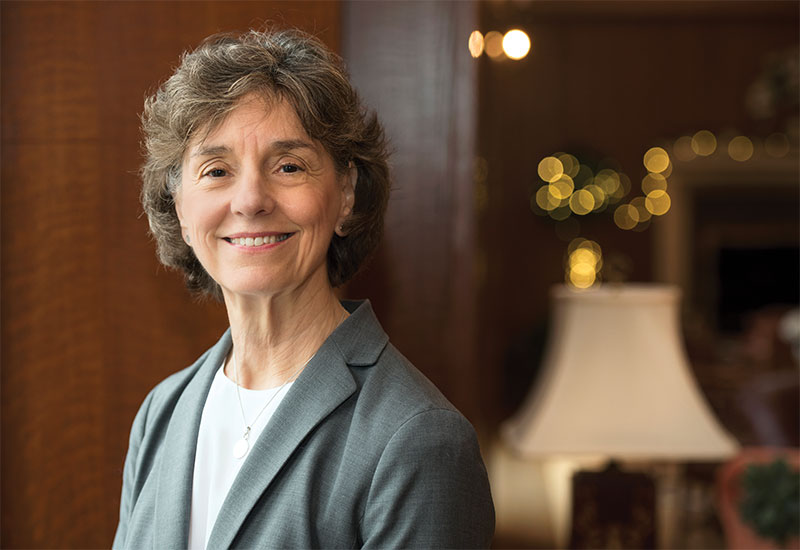
Rosemary Blieszner; photo by Logan Wallace.
Advancing higher education
I am honored to have spent my professional career, from 1981 until now, at Virginia Tech. Throughout my time in Blacksburg, I have been continually impressed by the cutting-edge research, learning, and engagement that the university produces. Now, as chair of the Beyond Boundaries Advisory Group, I am proud of the progress and the long-term vision that the university [is setting] for its next generation.
Beyond Boundaries focuses on determining how Virginia Tech will respond to the changing landscape of higher education and become a leading global land-grant institution by 2047. This vision celebrates the university's past, explores innovation strategies for today, and develops a trajectory for advancing as a leading institution of higher education in the future.
Past. Virginia Tech has a legacy of identifying its strengths and building upon them. In my time as the associate dean of the Graduate School, I witnessed innovations that expanded opportunities and encouraged interdisciplinary research and learning teams. For example, the Interdisciplinary Graduate Education Programs (IGEPs) bring together cross-college teams of faculty and graduate students to address a major fundamental problem or complex societal issue through research and education. IGEPs are fundamentally rooted in Virginia Tech's land-grant mission to produce knowledge that addresses community needs and enables people to solve pressing problems.
Present. Over the past two years, Beyond Boundaries has worked on finding ways to increase Virginia Tech's ability to anticipate and respond to change in higher education and society. This process blurs the line between planning and implementation.
Through Beyond Boundaries' recommendations, we are adopting ways of organizing study and scholarship to produce space and interactions for productive collaboration. The university is planning several innovation districts, including the Creativity and Innovation District, the Global Business and Analytics Complex, and the Health Sciences and Technology Innovation District. These districts will integrate instruction and scholarship along with the smart technologies, labs, and spaces needed to address complex issues.
Virginia Tech has also begun to characterize the VT-shaped experience, which President Sands calls "the cornerstone of our vision for the future." This concept encourages experiences that provide students with an education that promotes service, technological literacy, interdisciplinary skills, and experiential learning. It ultimately results in well-rounded graduates who are ready to take on the challenges inherent to the 21st century.
Future. Beyond Boundaries strives to position Virginia Tech as a global leader in the next generation of higher-education instruction, research, and engagement.
Our advisory group is considering how to design a continuous planning process that will help Virginia Tech become more responsive to internal and external change. To reach the university's goal of becoming a top 100-global institution, we also are developing metrics to assess progress toward our goals.
As I consider what Virginia Tech will be like in 2047, I am confident we are taking steps to position this institution to be strong and resilient. Virginia Tech will lead the way toward ever-improving outcomes for all who study and work here — and for the world beyond.
Rosemary Blieszner, Alumni Distinguished Professor of Human Development, serves as chair for the Beyond Boundaries Advisory Group. She is the interim dean of the College of Liberal Arts and Human Sciences.
Around the Drillfield
- Athletics
- Beyond Boundaries
- Corps of Cadets
- How Tech Ticks
- Infographic
- News
- What's in it?